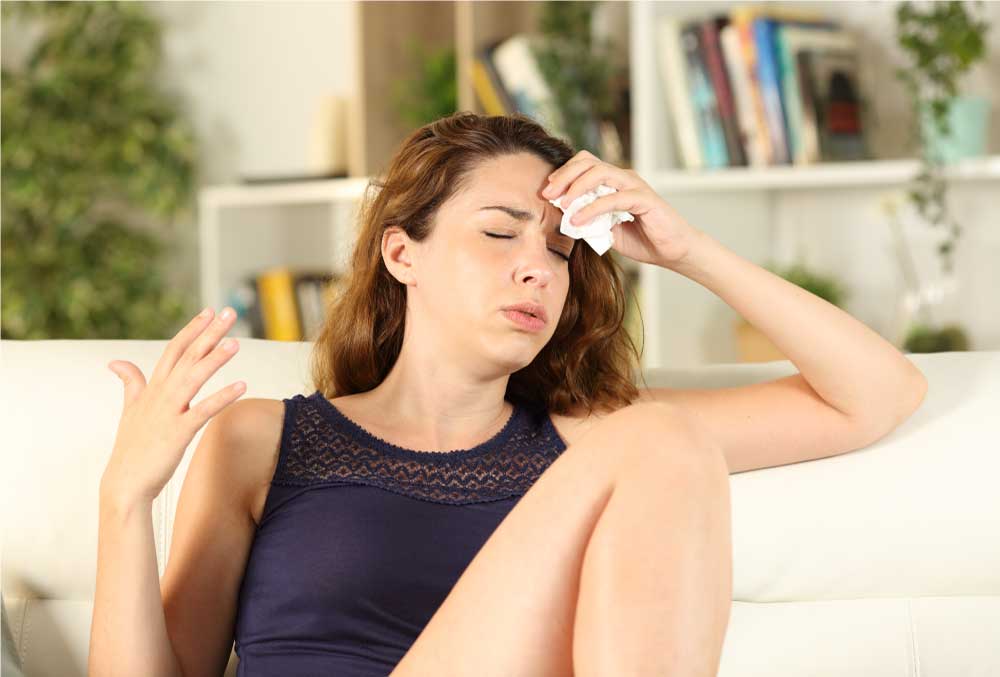Take Prevention Seriously
Everyone who spends time outdoors being physically active needs to be mindful of preventing heat-related illnesses. The National Safety Council reported 884 deaths and 2,061 injuries in the U.S. in 2019 from exposure to excessive heat. In addition, the Center for Disease Control or CDC says that heat is the leading cause of death for U.S. high school athletes.
On May 29, 2018, Jordan McNair, a 19-year-old from Randallstown, Maryland, and a sophomore on the University of Maryland football team, collapsed during an outdoor workout with his team. Jordan died two weeks later, on June 13, 2018. This tragedy and other verbal and mental abuse reports led to two external investigations into Maryland’s football program. The findings concluded that members of Maryland’s athletic training staff failed to diagnose and adequately treat McNair’s heatstroke symptoms quickly.
Rod Walters, a sports medicine consultant, investigated whether athletic trainers followed proper protocol during their treatment of McNair. In the report, Walters said, “There was a failure to identify escalating symptoms associated with exertional heat illness, including assessing vital signs, identifying the condition and aggressively treating the patient’s elevated core temperature. No apparatus was used for prompt cooling of the patient.” The findings resulted in the firing of the head coach. In addition, the University of Maryland agreed to a $3.5 million settlement with Jordan McNair’s family.
Coaches and employers need to be proactive and take steps to avoid heat exhaustion and heat stroke with their athletes and employees. There are governing bodies and responsible organizations that have a legal duty to ensure the safety of their athletes. When an illness or injury occurs due to someone’s negligence or failure to uphold their obligations, the victims have a right to pursue a financial recovery by filing a personal injury claim.
Korey Stringer was a pro-bowl offensive tackle for the Minnesota Vikings. He played six seasons and died during training camp in August 2001 from exertional heatstroke. The Korey Stringer Institute (KSI), founded in 2010, focuses on preventing sudden death in athletes. One recommendation from the KSI website is for athletic trainers and coaches to use Wet Bulb Globe Temperature (WBGT). WBGT helps determine the severity of weather conditions and what impact the temperature will have on an athlete. This short video, KSI’s Guide to WBGT for Exercise in the Heat, explains what WBGT is and how to use it.
The following content discusses heat-related illness signs and symptoms and treatment from the National Safety Council and Mayo Clinic websites.
Heatstroke
Heatstroke is a severe condition that happens when your body overheats, usually due to prolonged exposure to high temperatures or prolonged exertion in high temperatures. Heatstroke occurs most often in the summer months; however, it can happen anytime.
To prevent heat-related illness, responsible adults must take precautions. These are a few tips to follow:
- Avoid being outside between 11 a.m. to 3 p.m.
- Apply sunscreen (sunburn affects the body’s ability to cool itself)
- Drink plenty of fluids, even when you do not feel thirsty
- Replace salt lost through sweat with sports drinks
- Cover-up—wear loose, lightweight clothing and a hat
- Exercise indoors in air conditioning if conditions are unfavorable
- Pace yourself so you do not overwork
- Avoid alcohol
Heat Exhaustion and Heatstroke
Coaches and employers should monitor their athletes and workers for signs and symptoms of heat exhaustion and heatstroke.
Heat Exhaustion Signs & Symptoms
- Pale or ashen skin
- Moist skin
- Muscle cramps
- Rapid heart rate
- Fatigue, weakness, or exhaustion
- Nausea or vomiting
Heat Exhaustion Treatment
Heat exhaustion can advance to heat stroke if left untreated. If someone is demonstrating signs of heat exhaustion, take quick action to prevent the situation from going from bad to deadly. Treat victims by:
- Move person to a shaded or air-conditioned area
- Give them water or other cool liquids
- Apply wet towels or have the individual take a cool shower
Heatstroke Signs & Symptoms
- Body temperature greater than 103 degrees
- Skin is hot
- Skin flushed and dry
- No longer sweating
- Rapid breathing
- Headache or dizziness
- Confusion or altered mental status
- Irrational or belligerent behavior
- Convulsions or unresponsiveness
Take Quick Action When Heatstroke Is Suspected
Heatstroke requires emergency treatment. Untreated heatstroke results in damage to the brain, heart, kidneys, and muscles. The longer it takes to start treatment, the greater the risk of serious complications or death.
- Call 911 immediately.
- Move the victim to a shady or cool place.
- Remove unnecessary clothing.
- Immediately cool the individual. If possible, get assistance and immerse the victim up to the neck in cold water.
- If you cannot immerse the individual in cold water, place the individual in a cold shower, or move them to a cool area and cover their body with cold, wet towels.
- Continue to cool the person until their body temperature gets to 101 degrees.
- Monitor the individual’s breathing and be ready to give CPR if needed.
Have You or a Family Member Experienced a Heat-Related Illness Due to Someone Else’s Negligence?
Contact Us Today to Schedule a Free Consultation
Chaikin, Sherman, Cammarata & Siegel, P.C. has more than 90 years of combined experience handling sports injury cases in Washington, DC, Maryland, and Virginia.
If you, your child, or a loved one has suffered a heat-related illness that you believe was caused by someone else’s negligence, contact us online or call (202) 695 7447. We offer free case evaluations so you can learn more about your rights and how our team can help. Our highly accomplished personal injury lawyers have recovered hundreds of
millions of dollars for our clients.

